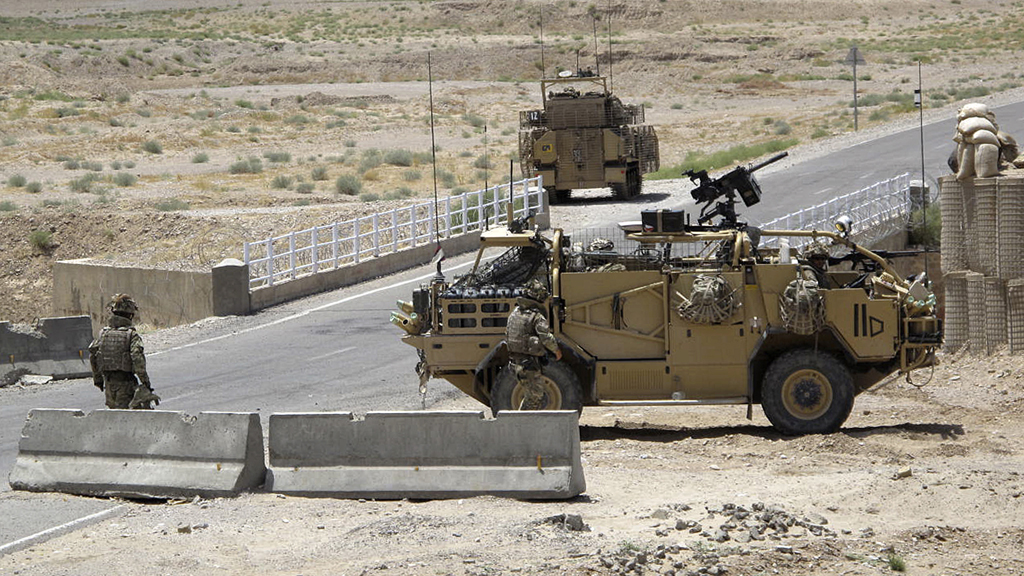British soldier shot dead in Afghanistan insider attack
A British soldier has been killed in Afghanistan by a member of the Afghan National Army, bringing the total of British soldiers killed by the Afghans they serve alongside on the current tour to six.
The soldier, who has not yet been named, was the victim of a so-called ‘”green on blue” attack – when Afghans turn their weapons on coalition colleagues – on Monday, the MoD said.
It is understood that the suspect first opened fire on colleagues within the Afghan National Army, before then attacking International Security Assistance Force (ISAF) soldiers at Patrol Base Hazrat in the Nahr-e Saraj district of the Helmand province.
The British soldier, from 28 Engineer Regiment, was shot and killed in the attack. Return fire killed the gunman at the scene, the MoD said.
Spox: Security Measures, Cultural Awareness, and Intelligence Gathering are all equally important in preventing Insider Attacks.
— ISAF (@ISAFmedia) January 8, 2013
It is understood that the Taliban has claimed the gunman was acting for them. However ISAF said in a press conference today that the “Taliban fraudulently claims responsibility for every insider threat incident with no regards for the truth”.
‘Extremely sad day’

Major Laurence Roche, spokesman for Task Force Helmand, said: “It is my painful duty to report the death of a soldier from 28 Engineer Regiment, who was shot and killed by a suspected member of the Afghan National Army at a patrol base in the Nahr-e Saraj district of Helmand Province.
“This is an extremely sad day for the Corps of Royal Engineers and everyone serving with Task Force Helmand. Our thoughts are with the soldier’s family and friends at this time.”
The family of the solider has been informed and has requested a 24-hour period of grace before further details are released.
British fatalities in Afghanistan: the full list of fallen personnel
“Green on blue” attacks have caused the deaths of all six British soldiers to have been killed during the current tour of duty. It means at least 54 international troops have died in such attacks.
The attack also brings the total number of UK service members killed in Afghanistan since operations began in October 2001 to 439.
The number of “green on blue” fatalities accelerated rapidly in 2012, data from independent monitoring organisation icasualties.org show (see graphic, above).
Whilst IEDs (improvised explosive devices) are the most commonly used method by insurgents to kill coalition troops, and have been responsible for half of all British deaths in Afghanistan, the use of uniformed Afghans to carry out attacks became a significant tactic for the first time last year.
Prior to 2012, “green on blue” attacks had been responsible for under ten British deaths in Afghanistan, approximately 4 per cent of total British deaths. However, in 2012 “green on blue” attacks were responsible for 25 per cent of British deaths, 11 out of the 44 that took place. In September, one of the worst months in 2012 for fatalities, it was used to target US and British troops.
In September Taliban officials said they would use the tactic to target Prince Harry as the royal returned to Camp Bastion in Helmand.
David Cameron told the House of Commons in December 2012 that nearly 4,000 British troops would be withdrawing from Afghanistan in April 2013, paving the way for a complete withdrawal by the end of 2014.
-
Latest news
-
‘I violated my moral compass working for Trump,’ former lawyer testifies3m

-
Working class creatives in film and TV at lowest level in decade5m

-
Israeli police investigating attack on Gaza aid convoy4m

-
Biden announces major tariff increase on Chinese-imported green tech3m

-
‘If NHS can afford it, people with obesity should have Semaglutide,’ says weight loss expert5m

-






